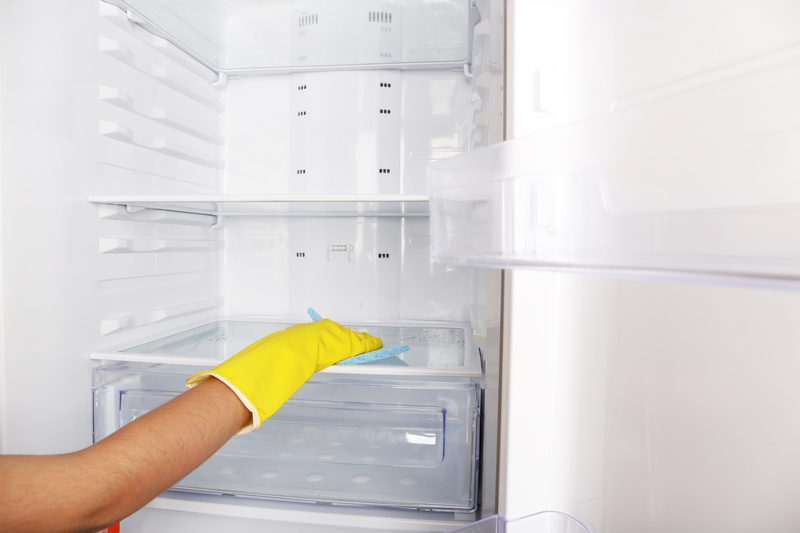Keeping your windows clean not only enhances the appearance of your home, but it also improves your view and lets in more natural light. However, many homeowners tend to overlook one crucial element of window cleaning- the window screens. These screens protect our homes from insects and debris, but they can easily become dirty and clogged over time. Without proper maintenance, they can reduce the effectiveness of your windows and even harbor allergens. That's why it's essential to regularly clean and dry your window screens to ensure they function properly. In this article, we'll discuss a hassle-free approach to washing and drying your window screens, so you can enjoy a clear and unobstructed view.
Understanding the Importance of Cleaning Your Window Screens
Window screens are usually made of mesh material that traps dust, dirt, pollen, and other pollutants as they enter through the windows. Over time, these particles can accumulate on your screens, making them look dirty and dull. Additionally, if left uncleaned for an extended period, they can become breeding grounds for bacteria and mold. This build-up can severely impact the air quality in your home and cause respiratory problems for those with allergies or asthma.
Moreover, dirty window screens can also affect the functionality of your windows. A layer of grime on the screen can prevent fresh air from entering your home and decrease ventilation. It can also block natural light from getting in, creating a dreary atmosphere indoors. To avoid these issues, it's crucial to regularly clean and dry your window screens.

Tips for Washing Your Window Screens
Before starting the cleaning process, it's essential to gather all the necessary tools. These may include a hose or bucket of water, mild detergent or soap, a soft scrub brush or cloth, an old towel or drop cloth, and a vacuum cleaner (optional). Follow these steps for hassle-free washing of your window screens:
1. Remove the screens from the windows: Detach the window screens from their frames and bring them to an open space for cleaning. This step will prevent water and soap from dripping onto your floors or walls.
2. Vacuum the screens (optional): If your window screens have a significant amount of debris and dust, you can use a vacuum cleaner with a brush attachment to remove loose dirt particles before washing.
3. Prepare the cleaning solution: Fill a bucket with warm water and add a few drops of mild dish detergent or liquid soap. Do not use strong chemicals or abrasive cleaners as they can damage the screen material.
4. Scrub the screens: Using a soft scrub brush or cloth, gently scrub both sides of the screen with the soapy solution. Pay more attention to areas with stubborn stains or accumulated grime.
5. Rinse with water: Once you've scrubbed the entire screen, use a hose or another bucket of clean water to rinse off the soap suds. Make sure to wash away all traces of soap to prevent streaks and residue.
Tips for Drying Your Window Screens
After washing your window screens, it's crucial to let them dry properly before reinstalling them. Here are some tips for hassle-free drying:
1. Gently shake off excess water: Before laying the screens flat to dry, gently shake them off to remove excess water. This step will prevent large water spots from forming on your screens.
2. Wipe with a towel: Use an old towel to wipe down both sides of the screen gently. This will help absorb any remaining moisture and speed up the drying process.
3. Lay flat in a well-ventilated area: Place your window screens on an old towel or drop cloth in a well-ventilated area, preferably outdoors in direct sunlight. The sun's heat and breeze will help them dry faster.
4. Flip halfway through drying time: To ensure even drying, flip your screens over after a few hours. This will prevent one side from being damp while the other is dry.
After washing your window screens, it's crucial to let them dry properly before reinstalling them. Here are some tips for hassle-free drying:
1. Gently shake off excess water: Before laying the screens flat to dry, gently shake them off to remove excess water. This step will prevent large water spots from forming on your screens.
2. Wipe with a towel: Use an old towel to wipe down both sides of the screen gently. This will help absorb any remaining moisture and speed up the drying process.
3. Lay flat in a well-ventilated area: Place your window screens on an old towel or drop cloth in a well-ventilated area, preferably outdoors in direct sunlight. The sun's heat and breeze will help them dry faster.
4. Flip halfway through drying time: To ensure even drying, flip your screens over after a few hours. This will prevent one side from being damp while the other is dry.

Conclusion
Cleaning and drying your window screens may seem like a daunting task, but it's necessary for maintaining a clean and healthy home. By following the hassle-free approach outlined in this article, you can easily keep your window screens in top condition, allowing for better air circulation and clearer views. Remember to regularly wash and dry your screens to prevent build-up of dirt and allergens. With these tips, you can enjoy hassle-free window cleaning and a brighter, more inviting home.
Pros and Cons of Washing and Drying Window Screens
Pros:
1. Improves air quality by removing dust, pollen, and other allergens from screens.
2. Enhances the appearance of your home by allowing more natural light in.
3. Increases ventilation by removing debris that may clog screen mesh.
4. Reduces breeding grounds for bacteria and mold on screens.
Cons:
1. Can be time-consuming if done manually.
2. May require purchasing additional tools or cleaning solutions.
3. Screens can be delicate, so care must be taken not to damage them during washing or drying.
Takeaways:
1. Regularly cleaning and drying window screens is crucial for maintaining a clean and healthy home.
2. Use mild detergent or soap and avoid harsh chemicals to prevent damage to screen material.
3. Properly drying screens is essential to avoid water spots or streaks.
4. Reinstall screens only after they are completely dry to prevent damage to windows and frames.
In conclusion, washing and drying your window screens doesn't have to be a hassle if done correctly using the right tools and techniques. Regular maintenance will not only improve the appearance of your home but also ensure the proper functioning of your windows. So, don't overlook this important aspect of window cleaning and make it a part of your cleaning routine for a cleaner and healthier living space.
Pros:
1. Improves air quality by removing dust, pollen, and other allergens from screens.
2. Enhances the appearance of your home by allowing more natural light in.
3. Increases ventilation by removing debris that may clog screen mesh.
4. Reduces breeding grounds for bacteria and mold on screens.
Cons:
1. Can be time-consuming if done manually.
2. May require purchasing additional tools or cleaning solutions.
3. Screens can be delicate, so care must be taken not to damage them during washing or drying.
Takeaways:
1. Regularly cleaning and drying window screens is crucial for maintaining a clean and healthy home.
2. Use mild detergent or soap and avoid harsh chemicals to prevent damage to screen material.
3. Properly drying screens is essential to avoid water spots or streaks.
4. Reinstall screens only after they are completely dry to prevent damage to windows and frames.
In conclusion, washing and drying your window screens doesn't have to be a hassle if done correctly using the right tools and techniques. Regular maintenance will not only improve the appearance of your home but also ensure the proper functioning of your windows. So, don't overlook this important aspect of window cleaning and make it a part of your cleaning routine for a cleaner and healthier living space.



